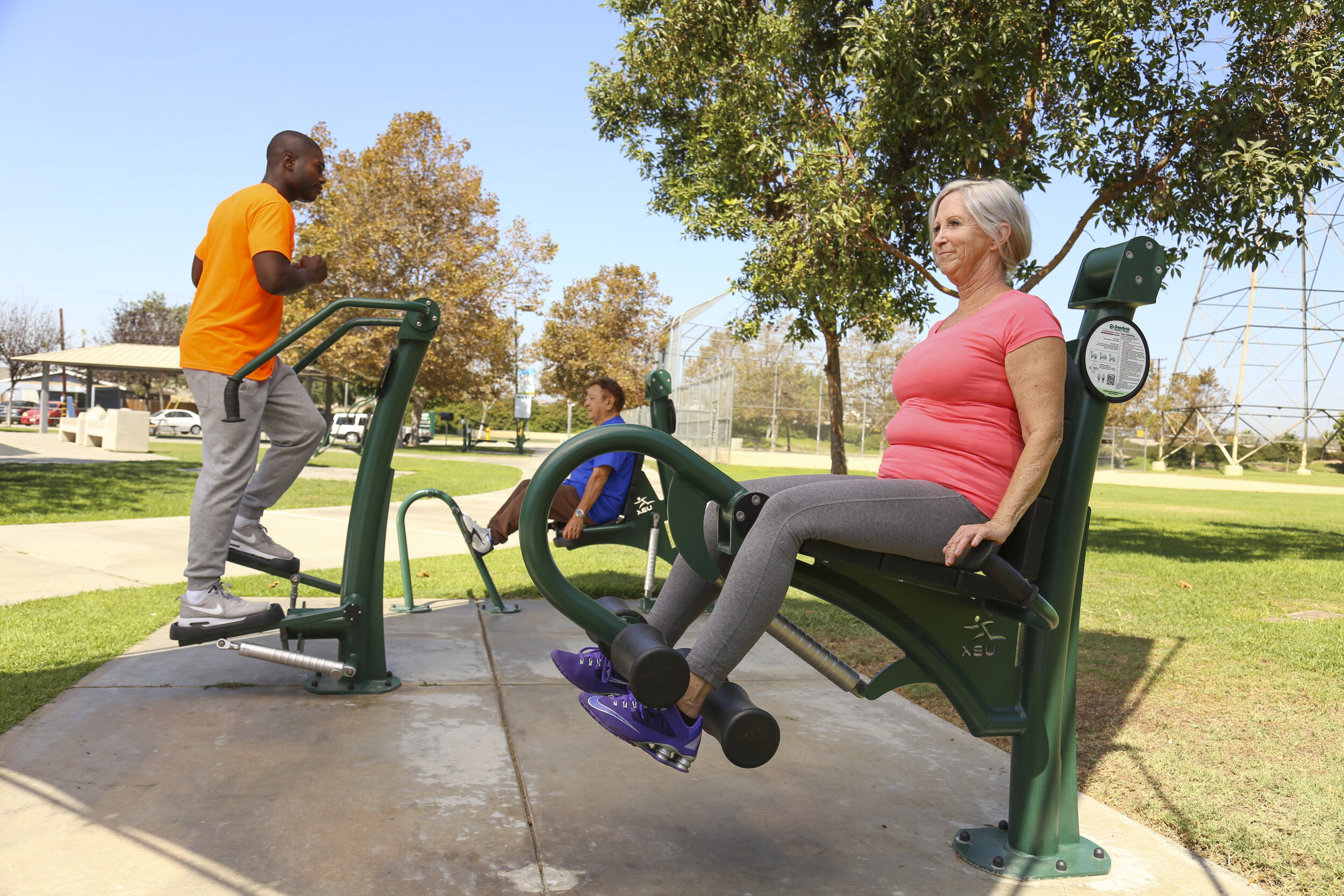Promoting Health in Public Spaces: Outdoor Gyms for the Whole Community
When it comes to facilitating active lifestyles, few amenities offer as much versatility and wide appeal as outdoor gyms. Across the country – and indeed, the world – public fitness spaces are becoming increasingly recognized as a way for users of nearly every age and ability level to enhance their quality of life. Adrian Benepe, Senior VP of The Trust for Public Land, emphasized the organization’s support of these amenities: “We think [Fitness Zones] are a tremendous investment … a study has been done by the Rand Corporation that shows that the cost per energy unit burned in a Fitness Zone is by far the cheapest intervention of any intervention you can do for fitness and health in a park.”
To ensure that a fitness area enjoys the highest usage and provides the optimum solution for each community, there are key considerations when designing a gym and specifying a product.
The most successful outdoor gyms not only facilitate exercise, but also social interaction. A gym design with all units arranged in a cluster, rather than spaced out along a path or trail, will encourage socialization. Gyms that allow people to exercise alongside friends and family will typically see more users, and those users will tend to exercise for longer periods of time. Besides locating multiple pieces of equipment in the same area, incorporating multi-user units is beneficial as well. There are many outdoor fitness pieces that accommodate multiple individuals; some larger fitness rigs can host a dozen or more users.
To attract the greatest variety of users, the gym should also be highly inclusive, able to serve both the able-bodied and those with disabilities. It’s important to note a gym may be “accessible” with respect to a legal definition but not be truly inclusive. Frequently, even though a unit may be available for a wheelchair user to transfer to, that individual still may have difficulty doing so – therefore it’s important to include units that eliminate the need to transfer in the first place. By making sure to design a truly inclusive gym, landscape architects can help fulfill a often-unmet need for those with disabilities, since even indoor gyms often do not have much - if any - equipment designed for this demographic.
Finally, a gym should be multigenerational. A good mix of many kinds of units will ensure that the gym has something to offer nearly every user, from teens to parents to senior citizens. Younger individuals will often gravitate to the challenging, functional fitness style workouts, and the outdoor fitness industry has evolved to accommodate this trend. Nearly every apparatus in an indoor gym has been replicated for use in the outdoors - from kickboxing pillars to cannonball pull-up bars, suspension training rigs to rope climbing stations.
In tandem with functional fitness, apparatuses designed for stretching and range of motion can be used not just for warm-ups and cool-downs on the part of athletes, but will also be enjoyed by older adults. Other types of units utilize body-weight leverage systems, which accommodate a wide variety of users by harnessing the user’s body weight to provide resistance. Finally, units that provide user-adjusted resistance - generally in the form of a piston - will further enhance the versatility and appeal of an outdoor space to a wide demographic.
By designing a gym with social interaction, inclusiveness, and multigenerational appeal in mind, the area will be best positioned to serve as many as possible, becoming a highly-frequented and valued amenity that the whole community can enjoy together.









